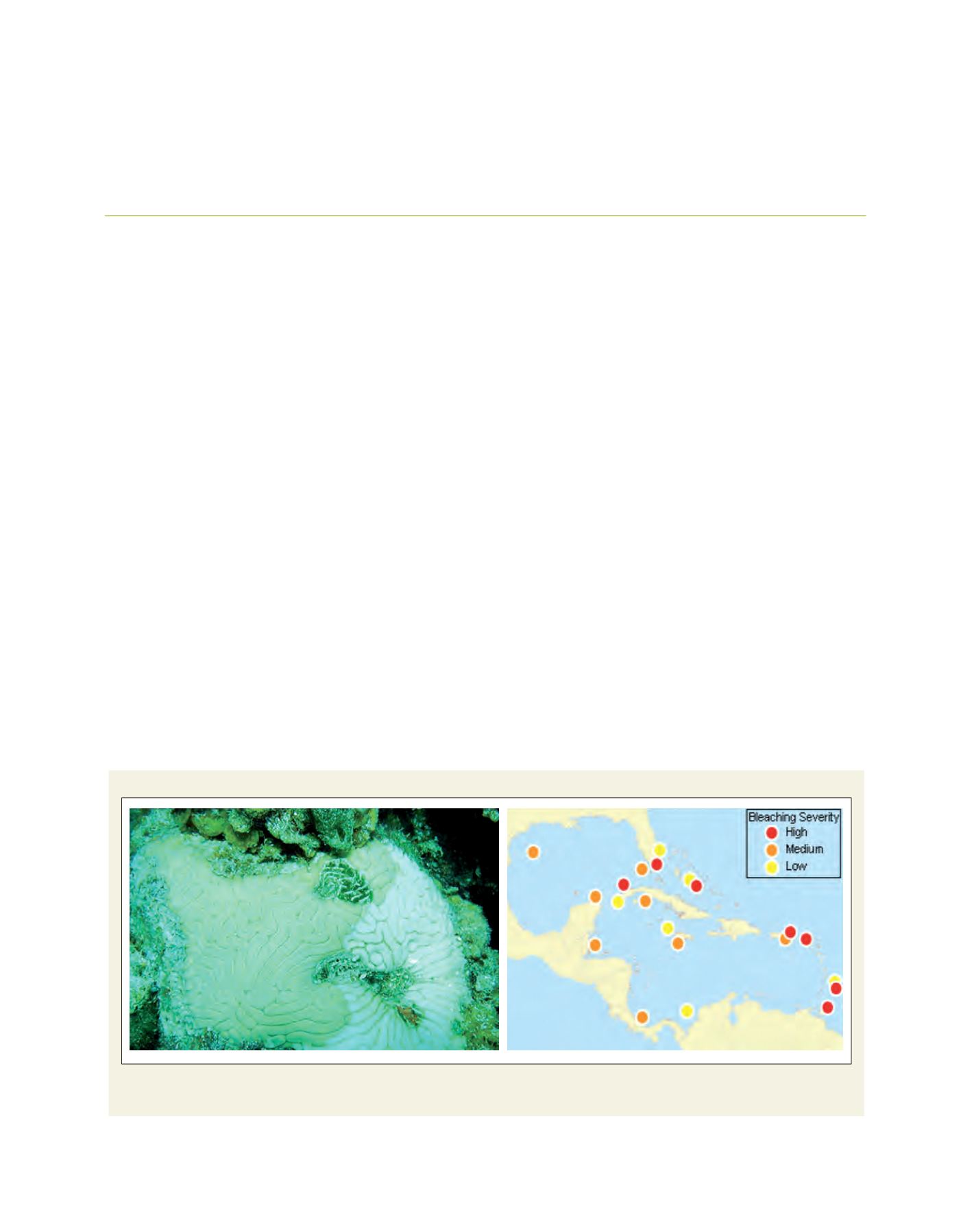

[
] 240
Feasibility issues: mitigation and
adaptation to climate change in the Caribbean
Andrea M. Sealy, Caribbean Institute for Meteorology and Hydrology
I
n recent years, there has been increased awareness of the
vulnerability of the Caribbean to climate change and its
impacts. One such organization that has been working to
enhance the region’s ability to mitigate and adapt to climate change
is the Caribbean Institute for Meteorology and Hydrology (CIMH).
As a World Meteorological Organization (WMO) designated
Regional Training Centre, CIMH has been involved in initiatives
such as the Small Island Developing States Caribbean project,
Caribbean Planning for Adaptation to Climate Change, Adaptation
to Climate Change in the Caribbean and Mainstreaming Adaptation
to Climate Change. It also participates in the Global Environmental
Change and Food Systems initiative, which is an international,
interdisciplinary research project focused on understanding the
links between food security and global environmental change. In
addition, CIMH has designed the Caribbean Water Initiative with
McGill University’s Brace Center for Water Resources Management
and Caribbean partner governments to address the complex chal-
lenges of water management in the region.
Comprising of mostly small islands bounded by the northern,
eastern and south-eastern coasts of South, Central and North America
respectively, the Caribbean region is particularly susceptible to envi-
ronmental changes and impacts because of its geographic location and
make-up. Islands have a unique vulnerability to climate
change because of their relatively small size, limited natural
resources and land use, remoteness, high external transport
costs, time delays in accessing external goods and reduced
quality in information flow. Other factors that exacerbate
this region’s vulnerability include large coastal zones and
limited hazard forecasting capabilities, coupled with public
complacency. There are also economic and demographic
factors such as limited human resources, densely populated
coastal, urban and low-lying areas and small limited econo-
mies, which are dependent on high-risk industries such as
tourism and offshore banking.
Long-term predictions for small islands
According to the Intergovernmental Panel on Climate
Change’s Fourth Assessment Report (AR4), rising sea
levels are likely to exacerbate flooding, storm surges,
erosion and coastal hazards, thus posing a serious threat
to the socioeconomic well-being of island communities.
This will certainly affect the Caribbean islands where
over half of the population lives within 1.5 kilometres
of the shoreline. AR4 also predicts that in most climate
change scenarios, small islands’ water resources are likely
A
dAptAtion
And
M
itigAtion
S
trAtegieS
Coral bleaching off the Florida coast
Bleached coral observed at Buck Island, St. Croix, US Virgin Islands, October 2005 (left) and map of preliminary bleaching reports with qualitative severity as
reported by field observers from September to November, 2005 (right)
Source: NASA/Ames Research Center and National Oceanographic and Atmospheric Administration
















